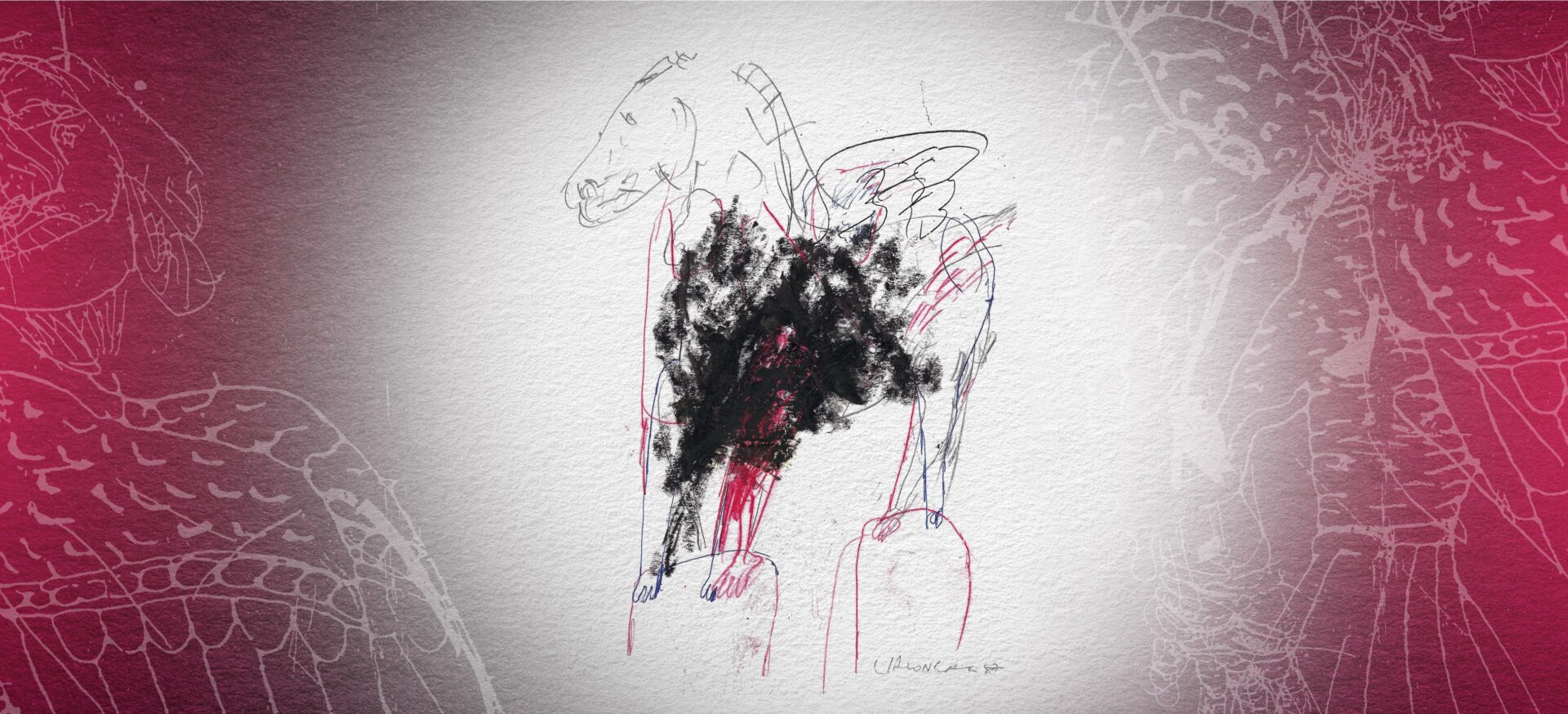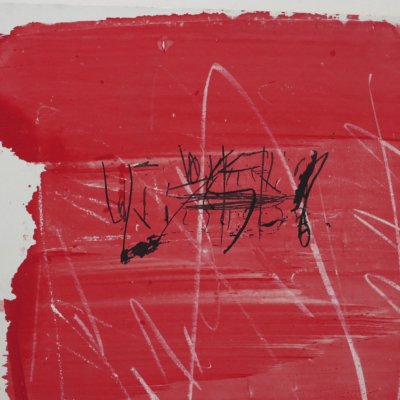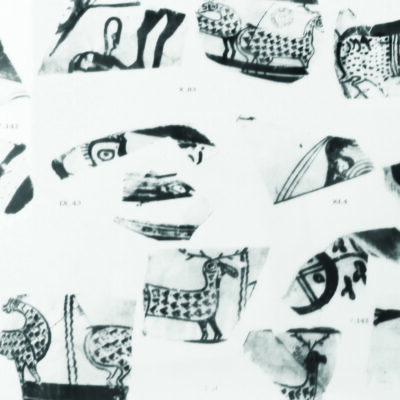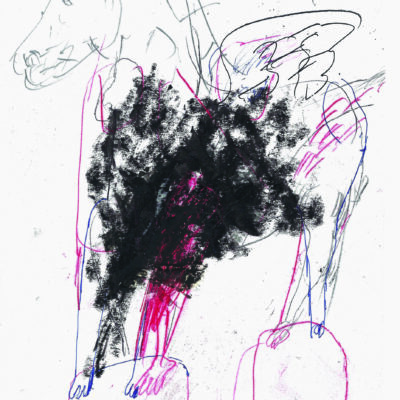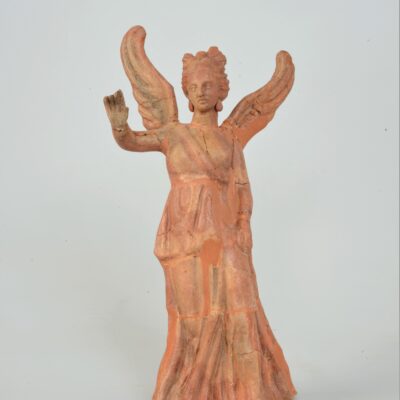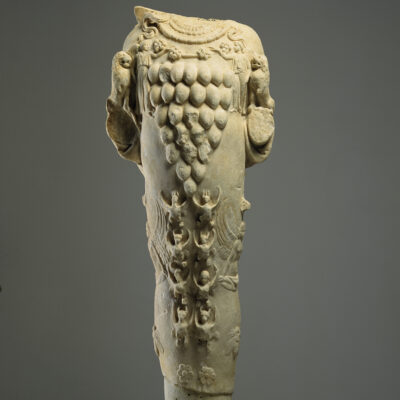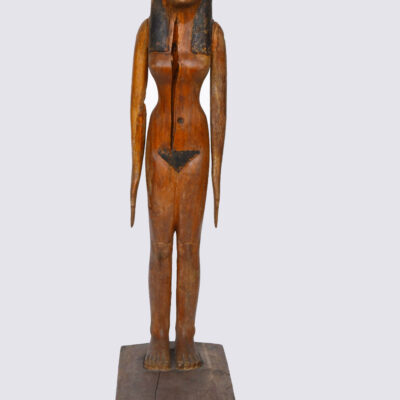MAY 2022
MONDAY
NOV 2022
WEDNESDAY
The past is now. George Lazongas: Myths and Antiquity
The National Archaeological Museum imbues for the first time in its recent course the rooms of temporary exhibitions with the ambience of a multidimensional space, in which antiquity encounters and converses with contemporary artistic creation. This reciprocal relationship begins with George Lazongas.
George Lazongas, emeritus professor of the Athens School of Fine Arts (ASFA), was born in 1945 in Larissa. He studied Architecture at the Aristotle University of Thessaloniki (1963-1970) and painting in Paris having received a French government scholarship. He has participated in more than thirty collective exhibitions from 1970 onwards and has conducted a series of individual exhibitions. Until 1999 he was professor at the Department of Architecture, Aristotle University of Thessaloniki, and in the years 2008-2012 at the ASFA. In 2008 he created a permanent visual installation for the «Elaionas» tube station in Athens. He lives and works in Athens.
In the present exhibition, which opens to the public on Monday, 9 May 2022, 30 works, 28 drawings and in 2 showcases 21 sketches and 2 books by George Lazongas «advance together» with 23 specially selected ancient artistic creations from the collections of the National Archaeological Museum. The exhibition conveys to the general public Lazongas’ diverse occupation with the past as well as the transcendent dialogue that takes place between the past and the present.
Right from his first steps in art, the artist retrieves in his works historical and mythological fragments to create new perspectives and conceptual narratives. On every occasion, references are transformed into enigmatic allegories of the present, into visual stories that unfold «in secret», stimulating the imagination. They encourage new readings by opening windows to new interpretations. George Lazongas’ wanderings through the past attend to selected ancient works, which bear meanings, stir up associations and invite the viewer to the path of constant introspection.
The exhibition is divided in the following units: «Mediterranean escapes», «Fragments of memory» and «Transformations of images». All three units constitute palimpsests of time, a concept Lazongas introduced in the terminology of the local art history in the 1970s to describe the layering of the image at different moments in time.
Mediterranean escapes
The Mediterranean, crossroads of three continents and numerous civilizations, provides the setting in which the ancient Greek civilization «was moulded». The collections of the National Archaeological Museum, which include artworks from Greece, Cyprus, Egypt and Italy, highlight the cultural dynamics of the ancient Greek spirit and offer a welcoming home to iconic artistic creations of other Mediterranean civilizations.
During his frequent travels around Greece, the countries of the Middle East, North Africa and Mediterranean Europe, George Lazongas studies and sketches on A4 paper sheets masterpieces of the past from different civilizations and different chronological periods. He turns the scattered traces of the history of art and architecture into contemporary drawn and painted versions, demonstrating the cultural interactions among the peoples and the multicultural nature of the Mediterranean. Central is the role of the “Nikae/Victories” series, which began in 1976, inspired by the Nike of Samothrace. The ancient statue is deconstructed and reconstructed. It takes the form of a contemporary emblem of love and a life-death symbol.
Chosen as companions in the artist’s quests across the Mediterranean were terracotta figurines of Nikae, statuettes of Egyptian deities and a marble statuette of Ephesian Artemis, which allude to the departure points leading to that perpetual transformation of the ancient artwork by the contemporary creator.
Fragments of Memory
During the thrilling process of excavation, fragments of ancient images constantly come to light, completing and aesthetically reflecting the continuity of Greek history. The conservation and scientific publication of these fragments constitute a continuous narrative concerning the past and the present’s perpetual “existence”.
The section “Fragments of memory” takes the deconstruction of the image to the extreme and shows George Lazongas’s conviction that “the fragment is the whole” as it preserves the memory intact.
In the late 1980s the artist turns writing -which was hitherto a complementary element in his works- into the core. He violently breaks up speech to form a narrative so fragmented as to act as an unintelligible sibyllic message. In the beginning of the next decade, he embarks on the series “Fragments-Shards”, replicating detached sections from the decorations and representations on Mycenaean pottery from Cyprus. At the same time, he begins the series “Columns”, painting architectural remnants in works that play with the antithesis of white and black, referencing light and darkness.
In Lazongas’s work, the fragmentation of the image functions symbolically, catastrophe being a stage in the creative process, fully linked to the concept of rebirth.
With this symbolic fragmented image “converse” works from the collections of the National Archaeological Museum, such as primeval stylized human figures, birds and animals, myths that cultivated the images, incisions attempting to communicate, composing a mosaic of fragments, which remains constantly incomplete, yet is also perpetually amended.
Transformations of Images
The Cyclopes, Scylla and Charybdis, the Lestrigones and the Sirens are the disastrous monsters that travellers and sailors met during their long journeys and which they had to conquer in order to survive, in an anguished confrontation with death itself.
The Sirens, these female daemons, await all travelers to drive them to death with their bewitching and seductive song which leads to oblivion (Lethe). The only ones who succeeded in surviving from their sweet singing were the Argonauts and Odysseus, who tied on his ship’s mast, did not surrender to their melody and, according to the myth, led them to death by falling on the rocks of their island.
The Sirens, symbols of danger, devastation and death become leading figures of George Lazongas’s compositions in the 21st century. He draws them as ugly or monstrous women exuding a peculiar Felliniesque allure. As in the ancient myth, they are transformed into hybrids with women’s heads and birds of prey. In the course of time, they mutate into a new mythic figure: Baubo. Thus, the artist invents a new visual mythology, imbued with his own experiences.
The continuous modification of the ancient prototype into a contemporary artistic creation attempted in the present exhibition of the National Archaeological Museum is worthy of being looked at by the public and the artists under a «different» perspective.
The exhibition footage is bilingual (Greek and English)
Admission to the exhibition is free by simply showing the Museum ticket.
Information:
Telephone numbers: 213214 4800, -4856


